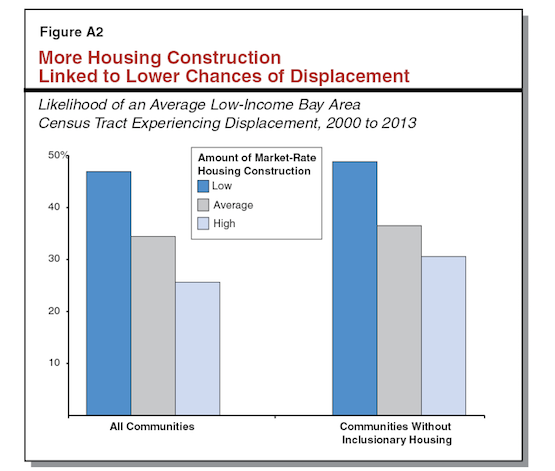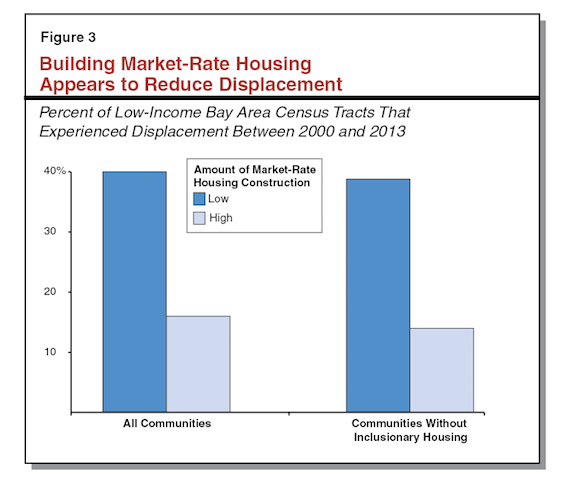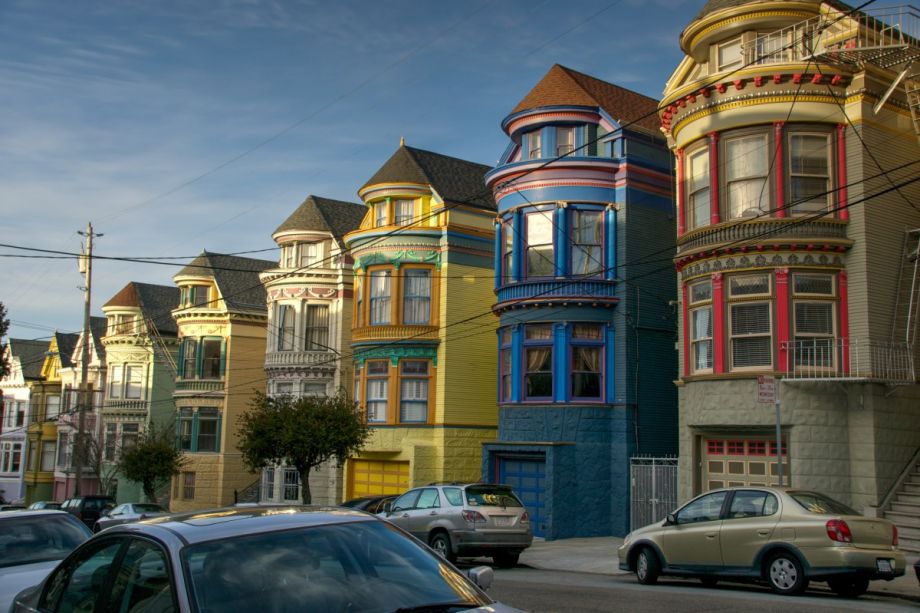Bay Area communities with the greatest expansion of market-rate housing are seeing the least displacement of low-income residents — independent of inclusionary zoning programs, according to a new report by California’s Legislative Analyst’s Office.
The report, “Perspectives on Helping Low-Income Californians Afford Housing,” addresses the state’s housing shortage and resulting affordability crisis. In an earlier report, the analyst’s office recommended an increase in private home building to mitigate the crisis, a position that some fear would not benefit low-income Californians.
“Because most new construction is targeted at higher–income households, it is often assumed that new construction does not increase the supply of lower–end housing,” states this week’s study. “In addition, some worry that construction of market–rate housing in low–income neighborhoods leads to displacement of low–income households.”
But the report suggests otherwise. According to the study, the probability of displacement in high-construction neighborhoods is half of that in low-construction neighborhoods, even though most new construction is targeted at higher-income households. Housing becomes less expensive as it ages, dropping from “luxury” status to the middle of the housing market within 25 years. When new housing stock is available, wealthier residents are likely to move into it, freeing up less expensive units. Without new construction, though, they compete with lower-income residents, driving up costs.

(Credit: California’s Legislative Analyst’s Office)
Perhaps surprisingly, the connection between construction rates and displacement was nearly identical for communities with and without inclusionary zoning policies. Many Bay Area communities do mandate inclusionary housing policies, which require developers to set aside some affordable units in new construction.

(Credit: California’s Legislative Analyst’s Office)
But many more low-income Californians struggle to pay rent than are assisted by affordable housing programs. Because expanding those programs to serve more households would be “extremely challenging and prohibitively expensive,” the report’s authors conclude that more residents would be served by an increase in market-rate development instead.
Jen Kinney is a freelance writer and documentary photographer. Her work has also appeared in Philadelphia Magazine, High Country News online, and the Anchorage Press. She is currently a student of radio production at the Salt Institute of Documentary Studies. See her work at jakinney.com.
Follow Jen .(JavaScript must be enabled to view this email address)
















